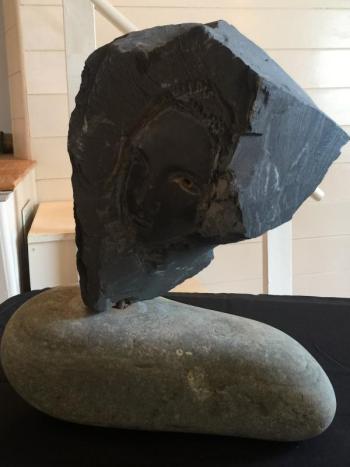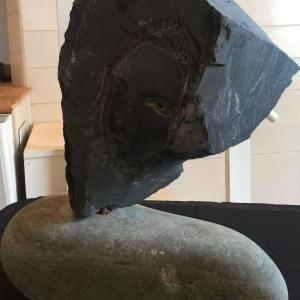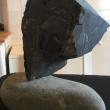Built With Stone exhibit at Boothbay Railway Village
Though the live stone sculpture event at the Boothbay Railway Village ended this past Sunday, the Maine Coast Stone Symposium continues through Thursday, Aug. 31. The exhibit, “Built with Stone: The Story of Granite, Slate, and Limestone in Maine,” is well worth the visit to learn exactly how much gravity Maine geodes have on the infrastructure of the United States.
Margaret Hoffman, BRV executive director, said the exhibit, curated by BRV’s Director of Education Kathy Goldner, was made possible by the assistance of over a dozen museums and historical societies as well as some of the quarry owners on the Maine coast.
“It wasn't until we developed the idea of the month-long symposium with the centerpiece being the exhibit, ‘Built with Stone,’ that hosting it here at the Boothbay Railway Village made sense,” said Hoffman. “As a history museum and a not-for-profit organization, the program had to fit our mission, essentially to tell the story of what life was like in Maine between the middle of the 19th and 20th centuries. You can't have the conversation about Maine during that time period without taking the stone industry into consideration – it was big business.”
While limestone and slate hold their purposes in Maine’s history and the nation’s history — slate from Monson was used for John F. Kennedy, his wife, and their children’s memorial stones — granite holds the greatest legacy. Guests learn how stone is created and quarried, and learn about places such as The Washington Monument, the Brooklyn Bridge, and the Library of Congress which were built, in part, on Maine granite.
On display are several slabs of granite ranging from Freshwater Pearl to Jonesboro Red, from Maine quarries from Washington to Ellsworth and Wells. There are 16 pieces in total and each one has its own character separate from the rest.
Also featured are three works by Cabot Lyford, as well as many of Lyford’s tools and pictures of works during their process. Lyford’s story and the pieces on display are an especially striking complement to the story of Maine stone.
Said Hoffman, “As a patron of the arts, I personally loved the idea of a coastal sculpture symposium from the instant.”
Event Date
Address
United States


























